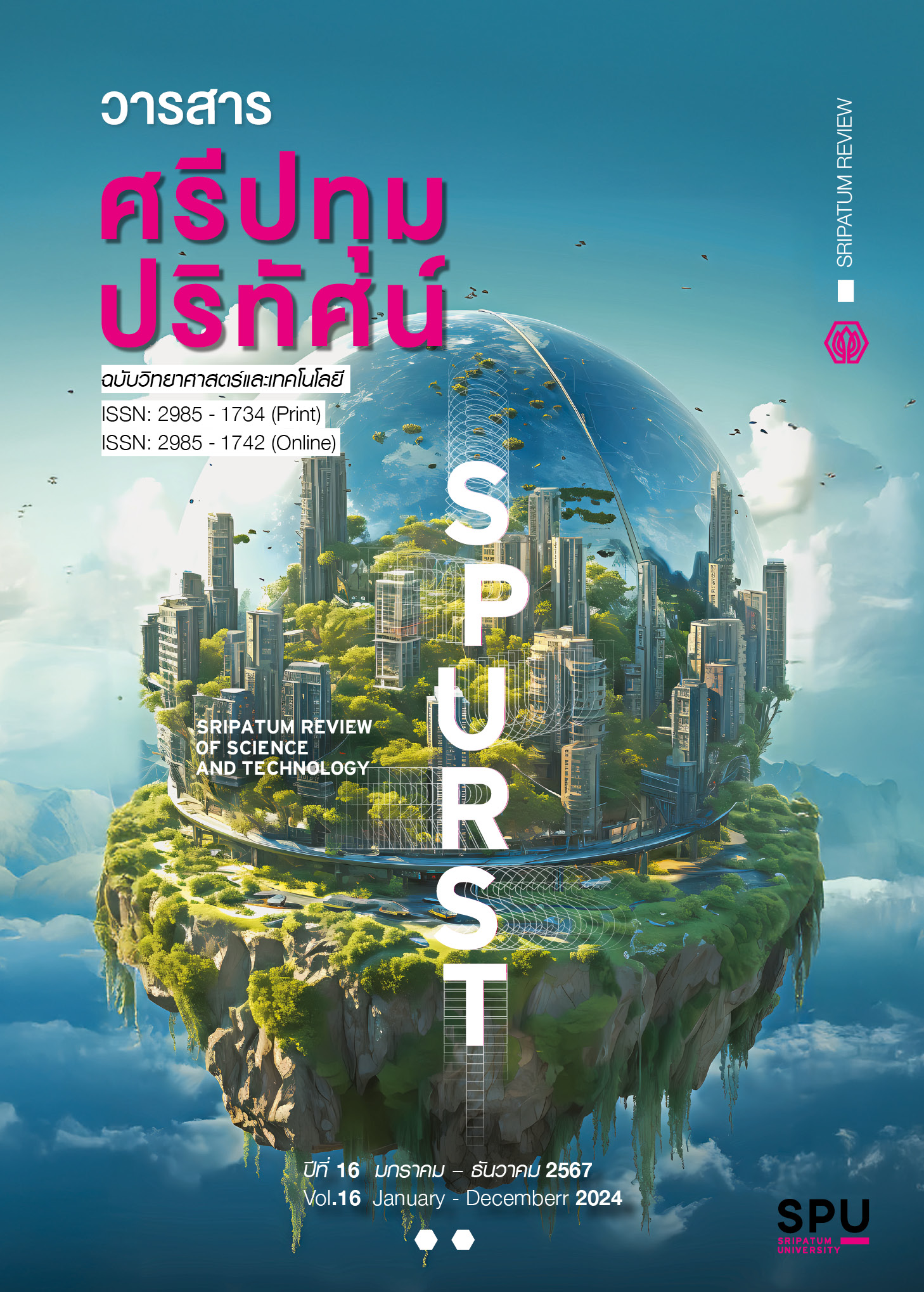Development of Carbon Powder from Burnt Coconut Husk for Latent Fingerprint Detection
Main Article Content
Abstract
Latent fingerprint detection is an essential process for evidence collection linked to the incident in forensic science. The carbon powder used in fingerprint detection is generally an imported product. In this research, the study of powder from burnt coconut husk for latent fingerprint detection was developed. The coconut husk used in this study was burnt into powder & analyzed by the scanning electron microscope with energy dispersive X-ray spectroscopy. Latent fingerprint detection on non-porous & semi-porous surfaces by the developed coconut husk powder was performed. The results showed that the powder from burnt coconut husk had an average size of 20.3 ± 2.5 micrometers under angular sheet with non-symmetric shape. The powders were applied to detect latent fingerprints imprinted on 4 types of surfaces & analyzed by the Mini Automated Fingerprint Identification System (Mini AFIS). It was found that the burnt coconut husk powder provided up to 60 points of minutiae whereas latent fingerprint quality was qualified to the criteria for fingerprint examination on all sample surfaces. Statistical analysis demonstrated that the minutiae & latent fingerprint quality collected from burnt coconut husk powder were not different from using imported powder at the significance level of 0.05. In conclusion, the developed powder from burnt coconut husk can be used as an alternative tool for latent fingerprint detection in forensic examination with advantages of easy preparation, low cost, & environmentally friendly material.
Article Details
References
Chaichana, T. (2016). 200 Liters Charcoal Kiln. [Online]. Retrieved from: https://engineer. mju.ac.th/wtms_webpageDetail.aspx?wID=1260. (in Thai)
Chaiheng, S. & Witchuwanich, W. (2019). The Latent Fingerprint Development by Using Spore of Ophioglossum pendulum L. on Different Surfaces. Journal of Criminology & Forensic Science, 5(1), 96-110. (in Thai)
Garg, R., K., Kumari, H., & Kaur, R. (2011). A new technique for visualization of latent fingerprints on various surfaces using powder from turmeric: A rhizomatous herbaceous plant (Curcuma longa). Forensic Medicine Authority Egyptian Journal of Forensic Sciences, 1, 53-57.
Gibb, C., & John, R. (2023). Toward better AFIS practice & process in the forensic fingerprint environment. Egyptian Journal of Forensic Science International: Synergy, 7, 1-14.
Kesorn, B., (2014). Development of reagents for the detection of latent fingerprints on the adhesive side of adhesive tapes. Thesis of the Degree of Master of Science Program in Forensic Science Graduate School, Silpakorn University. (in Thai)
Khanbo, K., Sungngam, C., & Thamaphat, K. (2016). The Science Society of Thail& Under the Patronage of His Majesty the King. Thail & Innovation Awards 2016. [Online]. Retrieved from: https://www.scisoc.or.th/tia16. (in Thai)
Kongkraisin, P., Woranam, K., Suwannaphong, P., Phanthong, P., & Aobaom, S. (2023). Study of Latent Fingerprint after Using General H& Sanitizer on Metronic Poly Mailer with Magnetic Powder. EAU HERITAGE JOURNAL Science & Technology, 17(2), 162–175. (in Thai)
Niranjan, H., Rai, S., Raikwar, K., Kamle, C., & Mia, R. (2022). Unconventional powder method is a useful technique to determine the latent fingerprint impressions. Journal of Forensic Science & research, 6, 045-048.
Pimpaporn, N. & Sinloyma, P. (2021). Development of Black Powder from Pyrolysis Process for Latent Fingerprint Detection. Sripatum Review of Science & Technology, 13(1), 199-213. (in Thai)
Rajan, R., Zakaria, Y., Shamsuddin S., & Hassan, N., F., N. (2020). Robust synthesis of mono-dispersed spherical silica nanoparticle from rice husk for high-definition latent fingermark development. Arabian Journal of Chemistry, 13, 8119–8132.
Saengkaew, S. (2013). Production & evaluation of fingerprints powder made from coal. Veridian E-Journal, Silpakorn University (Humanities, Social Sciences & arts), 6(1), 829-839. (in Thai)
Singthong, S. (2015). Fingerprints & Personal Identification. Prae-wa Kalasin Journal of Kalasin University, 2(2), 52-63. (in Thai)
Sodhi, G. S. & Kaur, J. (2001). Powder method for detecting latent fingerprint: a review. Forensic Science International, 172-176.
Thongthammachad, R. & Witchuwanich, W. (2019). The Development of Fingerprint Powder Made from Black Rice Husk for Detecting Latent Fingerprints on Different Types of Surfaces. Journal of Criminology & Forensic Science, 5(2), 87-103. (in Thai)
Tiprong, H. (2015). Development of black powder from wood charcoals for the detection of latent fingerprints on ceramic, plastic and paper cups. Thesis of the Degree of Master of Science Program in Forensic Science. Silpakorn University. (in Thai)
Wertheim, K. & Maceo, A. (2002). The Critical Stage of Friction Ridge Pattern Formation. Journal of Forensic Identification, 52(1), 35–85.


